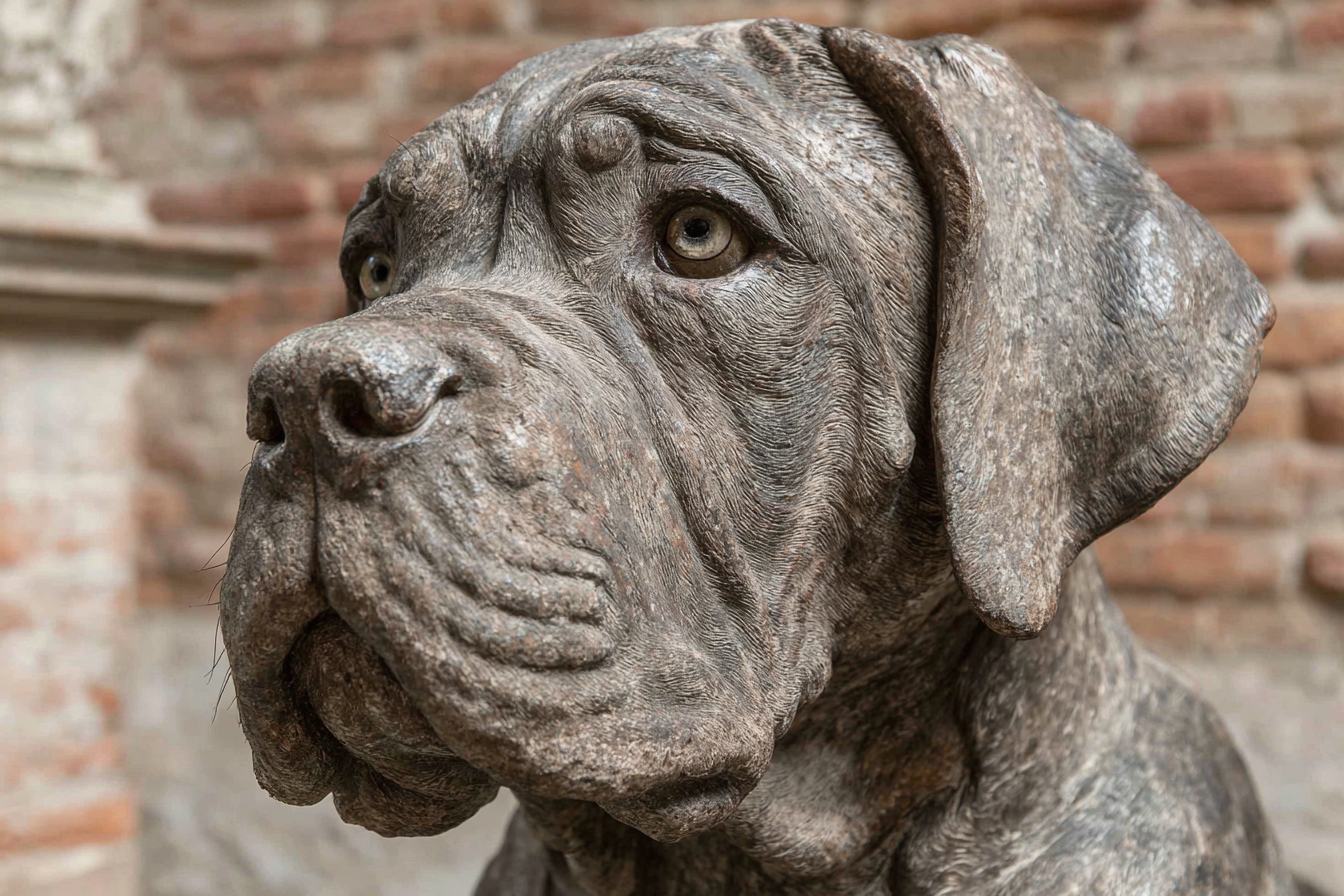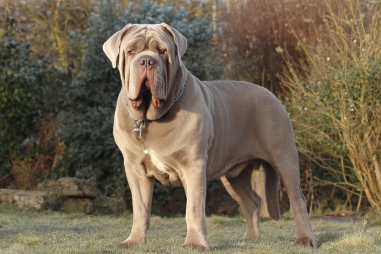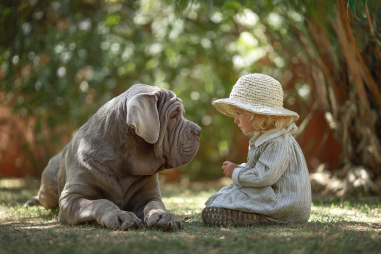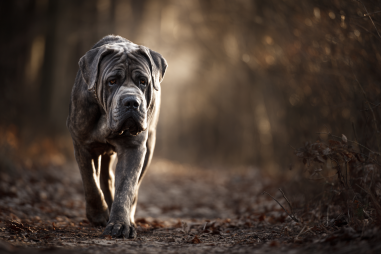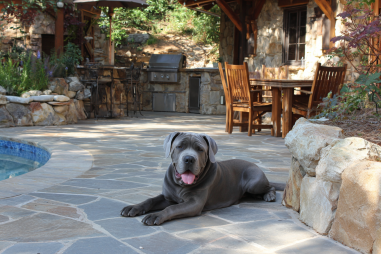The Neapolitan Mastiff is one of the most distinctive and impressive dog breeds, known for its massive size, loose skin, and striking wrinkles. While their appearance naturally draws attention, the history and origin of this majestic breed are equally fascinating. Tracing back hundreds of years, the Neapolitan Mastiff’s story begins in ancient Italy, where it served both practical and protective roles. Let’s take a journey through time to explore the breed’s ancient roots, its evolution, and the cultural significance it holds today.
Ancient Roots and Roman Influence
The history of the Neapolitan Mastiff can be traced to the ancient Roman civilization, where large, powerful dogs were highly prized for their guarding and fighting abilities. The breed is believed to descend from the ancient Roman Molossian dogs, which were robust, mastiff-type dogs used by the Romans in warfare, hunting, and as guardians. These dogs were renowned for their strength and loyalty, qualities that have been passed down through centuries.
Roman mosaics, frescoes, and writings depict large guard dogs that look remarkably similar to today’s Neapolitan Mastiff. These dogs accompanied Roman soldiers and patrolled estates, deterring intruders and protecting valuable livestock. The breed’s original home in Italy contributed to its name, linking it forever with the city of Naples, a region that became a stronghold for these formidable dogs.
Evolution of the Breed Through Centuries
After the fall of the Roman Empire, the Neapolitan Mastiff’s lineage continued largely in southern Italy, where the breed was carefully preserved and refined. Over the centuries, local breeders focused on maintaining the Mastiff’s protective instincts, massive structure, and unique loose skin. The breed developed into a more massive dog, characterized by its heavy wrinkles and distinctive folds of skin, which some experts suggest helped protect them during fights with wild animals or invaders.
Despite turbulent historical times, the Neapolitan Mastiff survived as a guardian of homes, farms, and estates. Though its pure lineage was occasionally mixed with other working dogs for strength or size, the core traits that define the breed were consistently nurtured. The Neapolitan Mastiff today still reflects the ancient Molossian type, with its massive head, deep-set eyes, and thunderous presence.
Historical Roles and Uses of the Breed
The Neapolitan Mastiff was historically appreciated for its versatility as a working dog. Its primary role was that of a guardian, protecting estates, properties, and livestock from thieves, wild animals, and poachers. The breed’s imposing size and courageous temperament made it a natural protector.
In addition to guarding duties, Neapolitan Mastiffs were sometimes used in warfare and as watchdogs. Their strength and fighting ability were valued in hand-to-hand combat during ancient battles and even later skirmishes. Over time, their role softened as they became more associated with guarding rather than fighting, but the breed always retained its formidable presence and loyalty to its family.
Recognition as a Modern Breed
The Neapolitan Mastiff remained largely a regional dog in Italy until the 20th century when efforts to standardize and promote the breed gained momentum. In the 1940s and 1950s, Italian cynologists, including the pioneering work of Giuseppe Solaro, played a major role in defining the breed standard and reintroducing the Neapolitan Mastiff onto the international canine stage.
The breed was officially recognized by the Fédération Cynologique Internationale (FCI) in 1956, cementing its place as a distinguished guardian breed. Later recognition by other major organizations, like the American Kennel Club (AKC) in 2004, helped the breed gain popularity worldwide. Today, dedicated breed clubs and enthusiasts continue promoting the Neapolitan Mastiff’s qualities and heritage.
Cultural Importance in Italy and Beyond
The Neapolitan Mastiff holds a special place in Italian culture, especially in the southern regions where the breed originated and was historically bred. Known as “Mastino Napoletano” in Italian, the dog embodies strength, loyalty, and protection, characteristics highly valued in traditional Italian households.
The breed is often seen as a symbol of Italian pride, heritage, and resilience. Its striking appearance has inspired artists, filmmakers, and writers, highlighting its role not just as a working dog but as a cultural icon. Internationally, the Neapolitan Mastiff has gained recognition not only as a guard dog but also as a gentle family companion despite its intimidating looks, reflecting the breed’s well-rounded nature.
Legacy and Preservation Efforts
Ensuring the Neapolitan Mastiff’s legacy and preserving its unique genetics and heritage has been a priority for breed enthusiasts and clubs worldwide. Due to its size and specialized appearance, careful breeding practices are essential to maintain health, temperament, and the distinctive physical traits that make the breed so unique.
Today, preservation efforts focus on:
- Promoting responsible breeding programs that emphasize health screenings and genetic diversity.
- Educating the public about the breed’s needs, temperament, and history to foster better ownership and care.
- Supporting breed clubs that protect the standard and facilitate events to showcase the Neapolitan Mastiff’s qualities.
These efforts ensure that the Neapolitan Mastiff’s proud history continues to thrive, allowing future generations to appreciate the breed’s remarkable legacy and enduring appeal.
From ancient Roman battlefields to modern-day homes, the Neapolitan Mastiff remains a true testament to strength, loyalty, and historical significance. Its fascinating origin story and continued importance make it much more than just a dog – it’s a living connection to the rich tapestry of Italy’s past and a beloved companion for the present.

